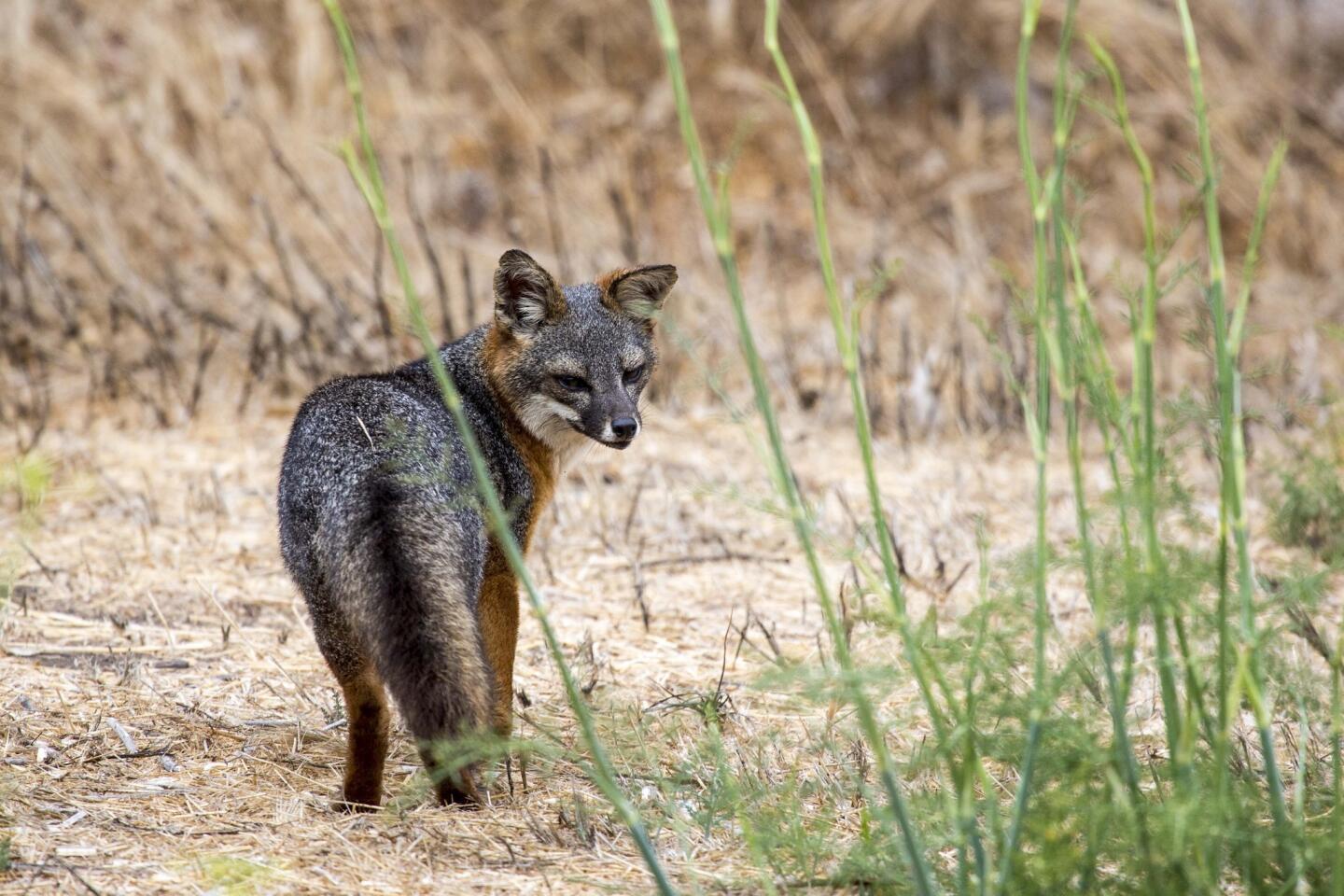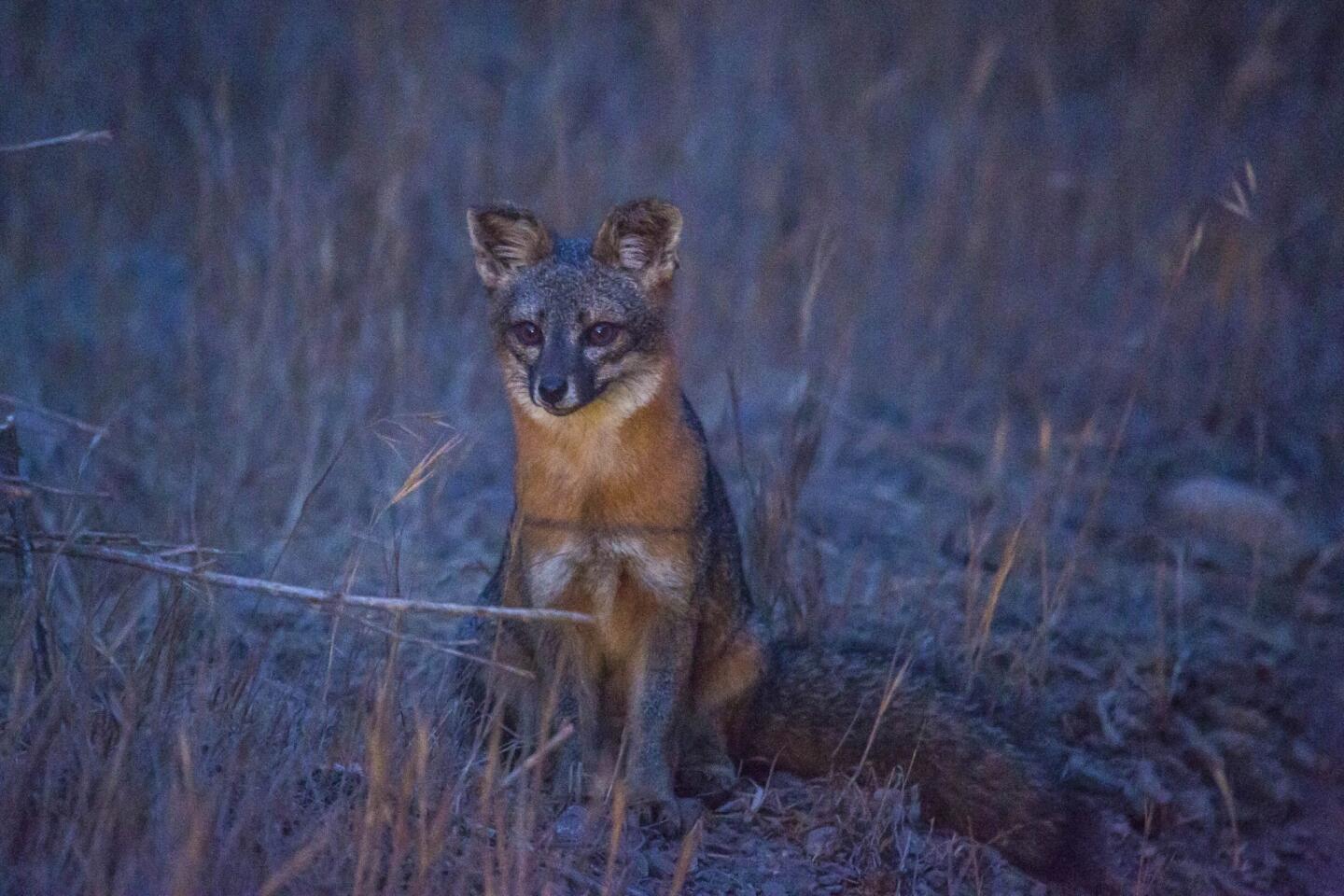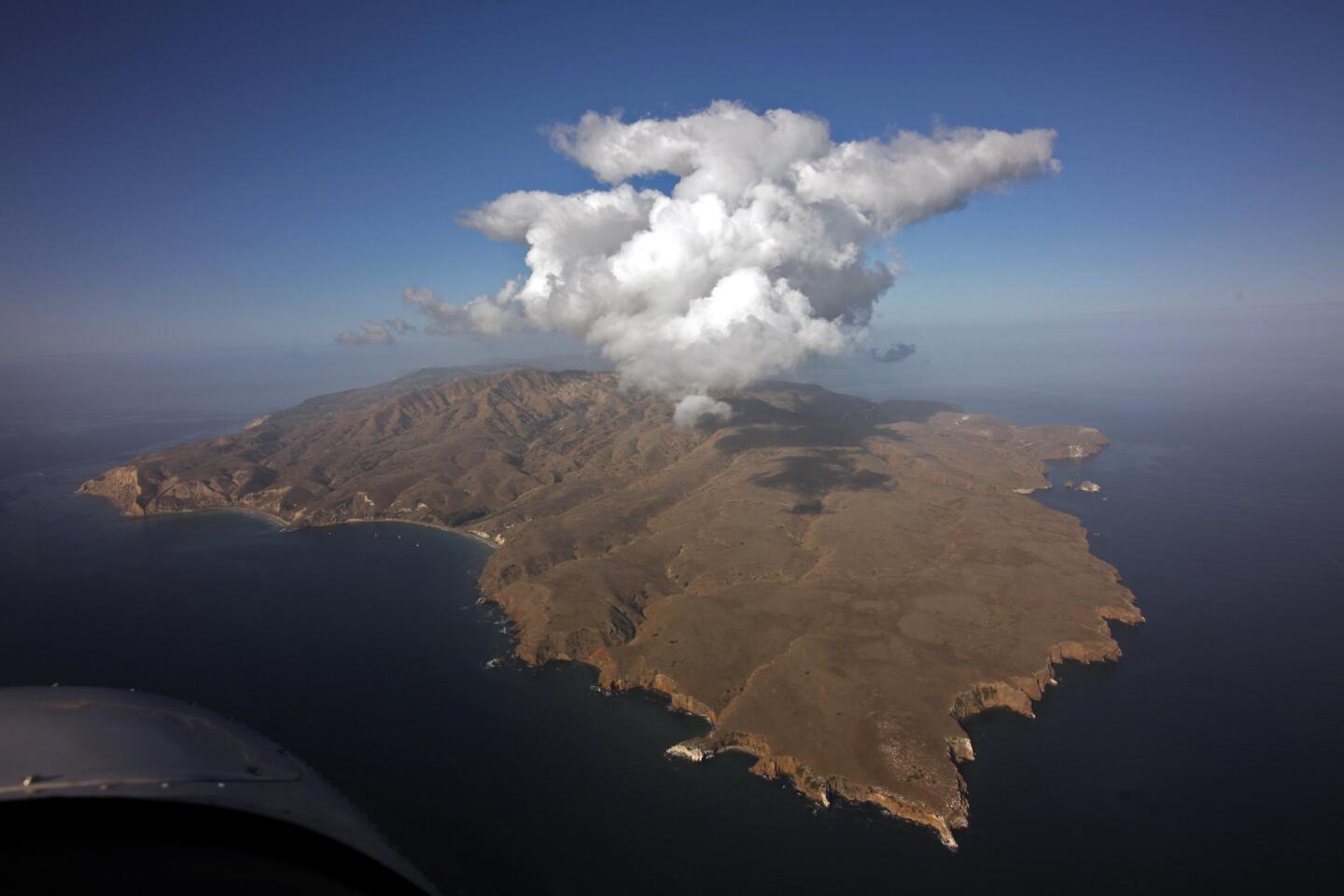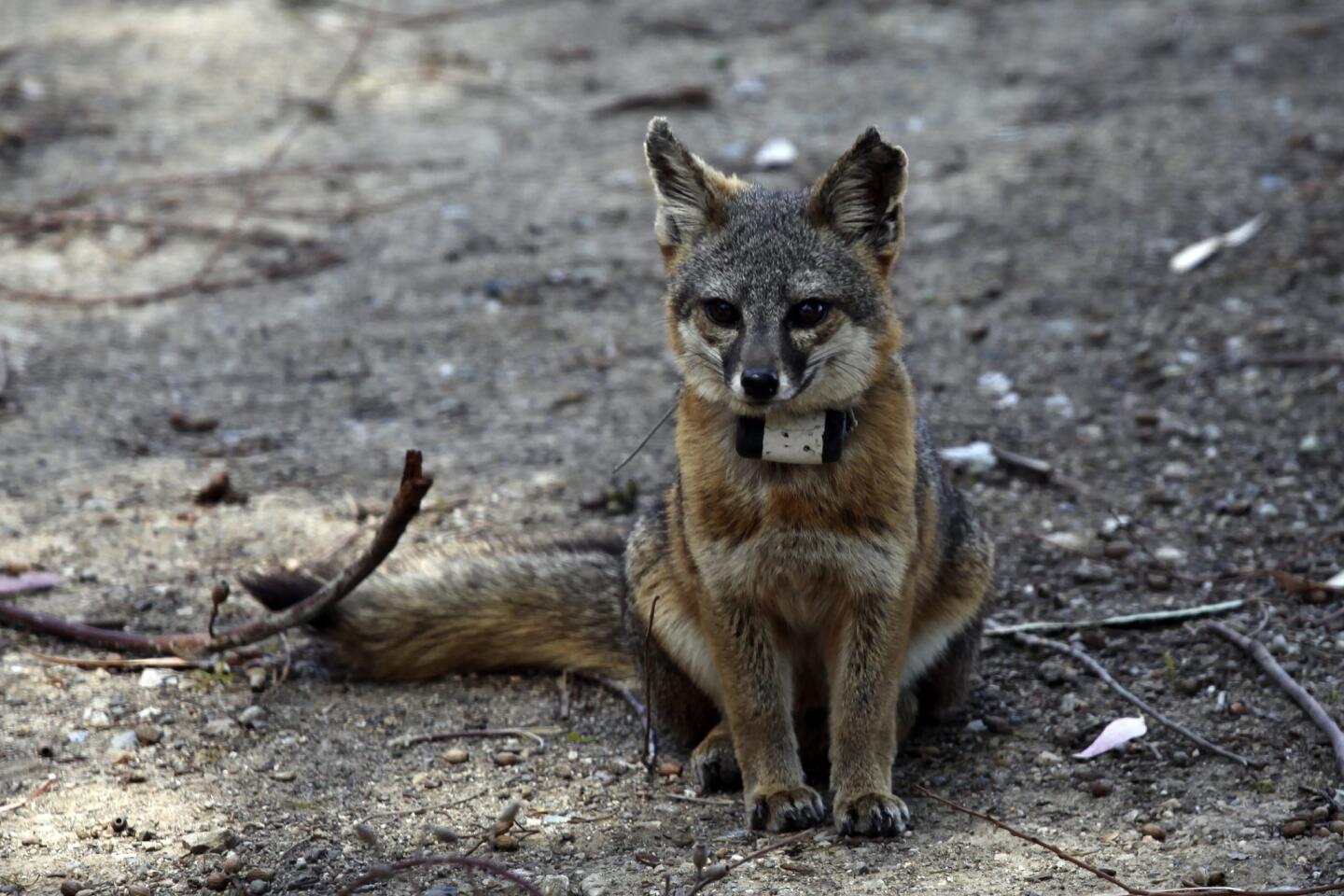Channel Islands foxes are doing so well officials want to take them off the endangered species list
Marking the end of a remarkably successful recovery effort, the U.S. Fish and Wildlife Service on Friday proposed taking three subspecies of fox native to California’s Channel Islands off the endangered species list.
Removing the San Miguel, Santa Rosa and Santa Cruz Island foxes from the list would be a historic ecological victory in the United States. They were classified as endangered in 2004 after suffering catastrophic declines primarily because of predation by Golden eagles.
The wildlife service is also proposing to move the designation of foxes on Santa Catalina Island from endangered to threatened. Populations of that fox — a subspecies found only on the 76-square-mile island about 22 miles off the mainland — crashed to roughly 100 in 1999 because of a canine distemper epidemic. The island is now home to about 1,800 of the animals.
A final decision on the proposals is expected within a year.
NEWSLETTER: Get essential California headlines delivered daily >>
The Channel Islands foxes’ comeback began in 2004, when the wildlife service partnered with the National Park Service, the Nature Conservancy and the Catalina Island Conservancy in relocating fox-eating golden eagles from the Channel Islands; bringing back bald eagles, which eat fish, not foxes; vaccinating against distemper; and breeding the cat-sized carnivores in captivity.

A Santa Cruz Island fox. Wildlife officials have proposed delisting the San Miguel, Santa Rosa and Santa Cruz Island foxes, which were classified as endangered in 2004 after suffering catastrophic declines mainly because of predation by Golden eagles.
Today, there are nearly as many island foxes scampering over the islands as there were hundreds of years ago, when the largest mammal on the Channel Islands — and the smallest fox in North America — flourished with no natural predators.
“The speed at which these subspecies have recovered points to the strength of the endangered species act in focusing conservation attention and catalyzing recovery actions, and demonstrates what we can achieve together,” said Dan Ashe, director of the U.S. Fish and Wildlife Service.
The move to removed the the diminutive carnivores from the list followed a five-year status review of the foxes, which was conducted by the wildlife service and took into account factors such as fluctuations in populations and continuing threats.
Each fox population on the Channel Islands “is now self-sustaining,” Robert McMorran, a wildlife service biologist, said. He said on those islands, “there are now about 5,500 island foxes.”
On Santa Catalina Island, the roughly 1,800 foxes surpasses the population of about 1,300 seen before the animals were decimated by the disease scientists believe was introduced by a mainland raccoon that hitched a ride on a boat or barge.
On Catalina, a resort destination visited by 1 million people each year, however, the potential for a disease outbreak remains. As a result, the service recommends that the subspecies’ status be moved from endangered to threatened.
“Initially, it was difficult to see possibilities of saving our foxes because there were so few of them left,” said Julie King, director of conservation and wildlife management at the Catalina Island Conservancy. “Stabilizing the population — and preserving its genetic integrity — took a lot of work by international wildlife experts, zoo veterinarians, captive breeding experts, epidemiologists, raptor biologists and so many others.”
The five-pound animals are gray with pointed noses, reddish ears and feet and black-tipped tails. They live about 10 years, pair for life and generally enjoy a carefree existence.
Managing the species on Catalina Island now includes trapping the foxes each year, inspecting them for illnesses, vaccinating them against distemper and rabies, outfitting them with telemetry and monitoring their behavior.
Biologists also watch for threats that could lead to unnatural fox deaths. Each year, several foxes drown in uncovered water containers, become trapped in trash cans, are injured or killed by unleashed dogs, hit by vehicles or die from the ingestion of rodenticides.
Twitter: @LouisSahagun
ALSO
Dramatic video shows gas leak ending at Porter Ranch
L.A. councilman joins calls to speed up toxic cleanup around Exide plant
Volcanic spires and Joshua trees: Obama protects 1.8 million acres in California’s desert
More to Read
Start your day right
Sign up for Essential California for news, features and recommendations from the L.A. Times and beyond in your inbox six days a week.
You may occasionally receive promotional content from the Los Angeles Times.












